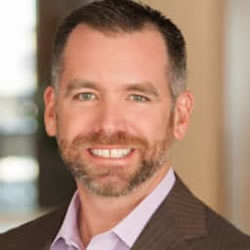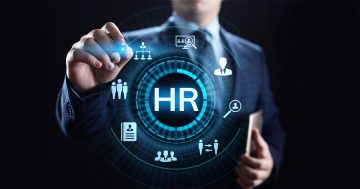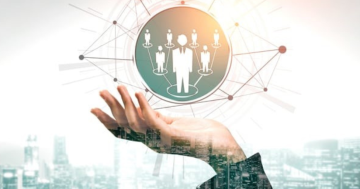Dan Schawbel* talks to Mark Ralls, the Chief Executive of a company that uses workforce analytics to help organisations in the era of hybrid work.
 I recently interviewed Mark Ralls, Chief Executive of ActivTrak, a workforce analytics software company that provides productivity insights.
I recently interviewed Mark Ralls, Chief Executive of ActivTrak, a workforce analytics software company that provides productivity insights.
ActivTrak provides leaders and employees with the data they need to work together and improve how work gets done.
Mark (pictured) has more than 20 years of experience building high-performing and scalable organisations.
We discussed workforce planning challenges and shifts, productivity and engagement in a hybrid work environment, and the connection between wellbeing, productivity, and retention.
Mark also shares how to use workforce data and analytics to your advantage regardless of your organisational status.
From your perspective, what have been the biggest shifts and challenges when it comes to workforce planning in today’s hybrid workplace?
The rapid growth of hybrid work over the past three years is obviously inseparable from what caused it: The COVID-19 pandemic.
During the pandemic, whether driven by Government mandate or individual choice, organisations rapidly shifted to remote or hybrid work for every employee able to do so.
This much is obvious.
What is less well understood is the degree to which the pandemic reduced the size of the workforce, both through early retirements and reduced immigration.
Technology and e-commerce businesses experienced unprecedented demand growth and responded with equally unprecedented hiring.
Sectors like hospitality and travel saw demand destruction and shrank their workforces.
Now, those trends have reversed.
This creates a challenging environment for employees and employers as they navigate the dynamic logistics of hybrid work.
For employees, it has meant learning to balance the demands of work-life in an unstructured environment without the typical guardrails to maintain focus and productivity.
For managers, it has involved learning to manage from afar with greater empathy and understanding — of different needs, different goals and different workstyles.
It’s a lot easier to manage by walking around than via Slack or Zoom if someone may be struggling.
Building and preserving culture and camaraderie are two of the biggest, yet most under-rated issues that will have the biggest impact on the long-term success of hybrid work.
Based on your 2023 State of the Workplace report, how has employee productivity and engagement changed?
When it comes to productivity, we found digital work habits have stabilised.
As the seismic shifts of the past few years continue to settle, the long buzzed-about new normal may finally be simply, normal.
Unfortunately, employee wellbeing continues to be at risk.
While trends show the number of over-utilised employees dropped, nearly 30 per cent still face risk of attrition due to ongoing over and under-utilisation.
Digital overload is certainly one factor.
Employees interacted with 20 per cent more tools, sites and apps this past year, as more organisations threw more technology at the challenges of hybrid work.
Sometimes this is disrupting and frustrating.
One assumption is that more deep work is being done at weekends when workers can focus better with fewer interruptions.
What is the connection between employee wellbeing, productivity and retention, and what can leaders do to improve these outcomes?
They’re all inextricably connected.
How you define and measure productivity has a significant impact on how you sustain engagement and wellbeing.
Just because someone works longer hours doesn’t mean they’re more productive.
In fact, long hours could signal larger issues such as lack of tools or inadequate training.
Managers need to be able to ‘see’ and understand when employees are at risk of disengagement and burnout and to intervene with resources and coaching.
This is especially hard with hybrid work that may span various schedules and locations.
Adding to that, many employees are afraid to speak up and ask for help.
As a result, many continue to spin their wheels until they either give up or burn out.
The reality is that people want to contribute; they want to spend their time doing something that matters and makes them feel like they accomplished something valuable.
The best managers already know and cultivate this; hybrid work is forcing others to learn the hard way.
Can you share some examples of how workforce analytics can help organisations manage their talent more effectively and efficiently?
Digital workplaces are in a constant state of flux, especially now, with hybrid work.
This makes it difficult to see and understand how people work.
Workforce analytics help leaders replace costly guesswork with data-informed decisions, providing an unbiased and objective perspective.
The best solutions provide visibility and insights into digital activity across people, processes and technology to reveal patterns and trends about employee work habits.
This gives employers the tools to set goals and benchmarks, track progress against results and optimise outcomes for success.
Workforce analytics can also provide valuable information about teams’ work habits to quickly surface meaningful trends and coaching guidance tailored to their specific needs.
For employees, workforce analytics insights can help individuals self-manage by providing real-time visibility into digital work habits to help them improve their workplace experience.
In my personal experience, workforce analytics data helps me be self-aware and make better choices about how I work.
I was diagnosed with ADHD in business school and ensuring adequate focus has always been a challenge.
It was only when I joined ActivTrak, and obtained access to my own granular activity data, that I gained objective data on how I get work done (or not) each day.
Thanks to my ActivTrak data I was able to identify the top sources of task-switching and distractions and take concrete steps to mitigate them.
A lot of the fear about hybrid work is the fear of the unknown.
Workforce analytics give everyone from the C-suite to individual contributors the power to identify and remove barriers to success so they can do their best work.
*Dan Schawbel is a bestselling author and Managing Partner of Workplace Intelligence, a research and advisory firm helping HR adapt to trends, drive performance and prepare for the future.
This article is part of his Workplace Intelligence Weekly series.











